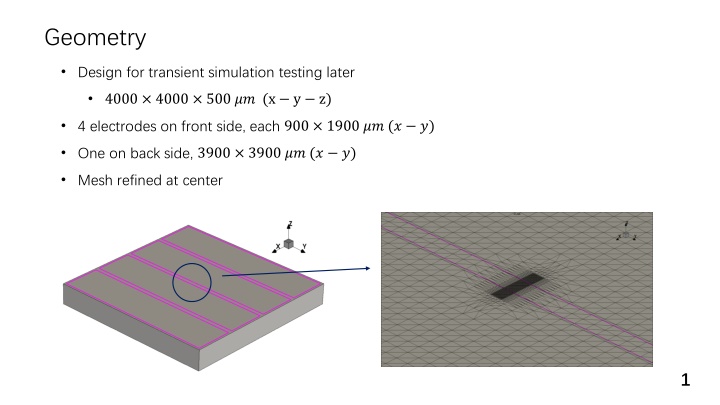
Transient Simulation for Geometry Design and Doping Effects in Semiconductor Testing
Explore the transient simulation process for semiconductor testing involving geometry design and doping during CVD process. Understand the I-V characteristic curve physics, heavy ion generation, and space charge effects in the simulation. Visualize the key aspects and parameters involved in the simulation process to enhance semiconductor testing strategies.
Uploaded on | 1 Views
Download Presentation

Please find below an Image/Link to download the presentation.
The content on the website is provided AS IS for your information and personal use only. It may not be sold, licensed, or shared on other websites without obtaining consent from the author. If you encounter any issues during the download, it is possible that the publisher has removed the file from their server.
You are allowed to download the files provided on this website for personal or commercial use, subject to the condition that they are used lawfully. All files are the property of their respective owners.
The content on the website is provided AS IS for your information and personal use only. It may not be sold, licensed, or shared on other websites without obtaining consent from the author.
E N D
Presentation Transcript
Geometry Design for transient simulation testing later 4000 4000 500 ?? (x y z) 4 electrodes on front side, each 900 1900 ?? (? ?) One on back side, 3900 3900 ?? (? ?) Mesh refined at center 1
Doping During CVD process, Boron and Nitrogen are common impurities Boron Concentration Carrier Concentration (Boron Active Concentration ) Add 1010 Boron Active Concentration 2
I-V Characteristic Curve Physics { EffectiveIntrinsicDensity( OldSlotboom ) Mobility( -ConstantMobility DopingDep HighFieldSaturation( Eparallel ) Enormal ) Recombination( SRH( DopingDep ) Avalanche ) } 1 2 3 4 3
Transient Simulation - Physics Physics { EffectiveIntrinsicDensity( OldSlotboom ) Mobility( -ConstantMobility DopingDep HighFieldSaturation( Eparallel ) Enormal ) Recombination( SRH( DopingDep ) Avalanche ) HeavyIon( Direction= (0, 0, 1) Location = (@x0@, 0, -260) Time = 1e-9 Length = 520 Wt_hi = 1 LET_f = 5.767e-6 Gaussian PicoCoulomb ) } Simulation of electron hit From (0, 0, -260) to (0, 0, 260), penetrate the detector Wt_hi : radius same as IV simulation 1 ?? LET_f : linear energy transfer 5.767 10 6??/?? Gaussian : uses Gaussian distribution instead of exponential distribution PicoCoulomb : specifies the unit to be ?? and ??/?? for Wt_hi and LET_f respectively 4
0, 0, -260 2, 0, -260 5, 0, -260 8, 0, -260 5
HeavyIonGeneration x0=5um 6
SpaceCharge x0=5um 7
